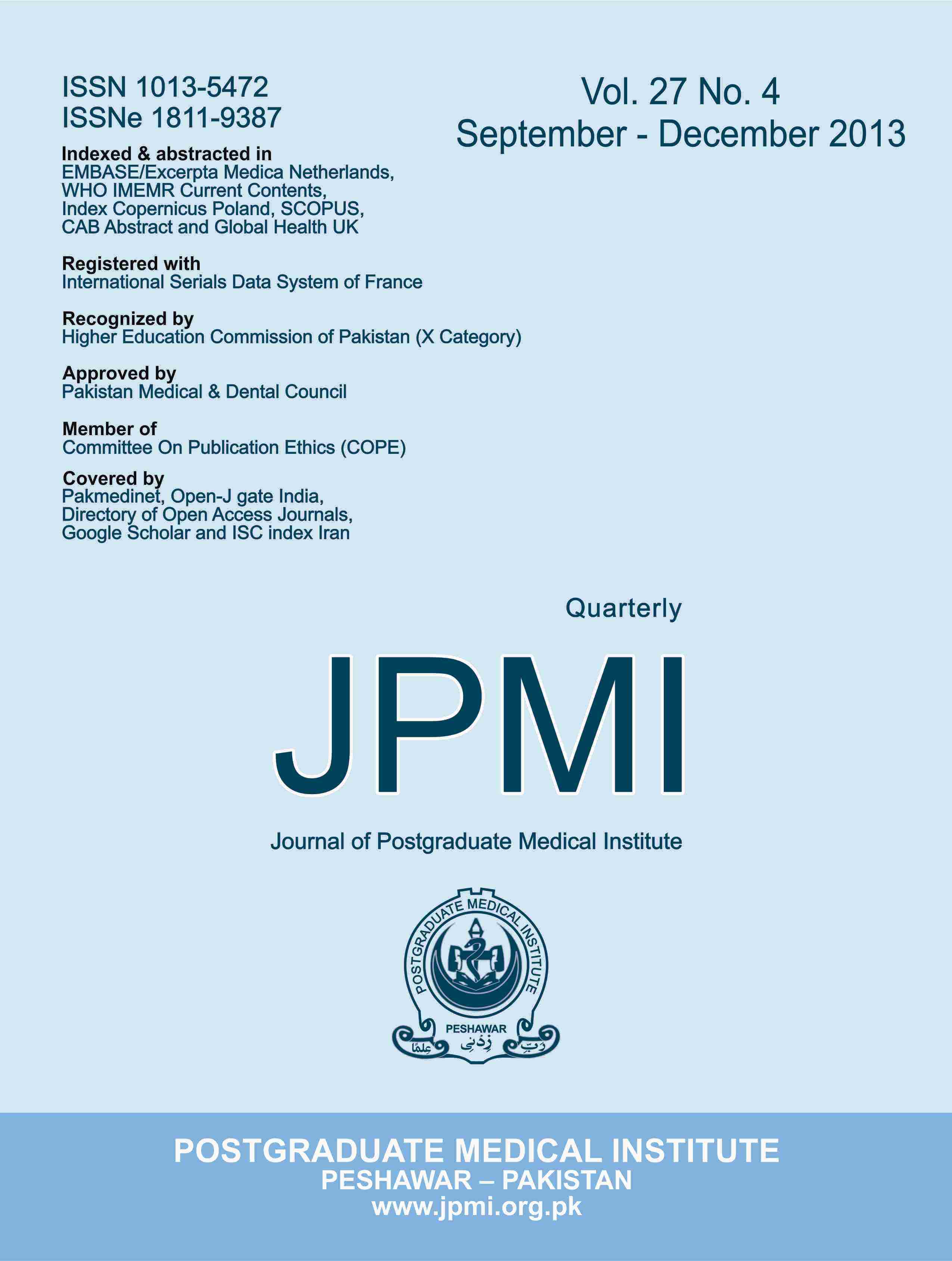Non-invasive positive pressure ventilation facilitates early extubation in post operative cardiac patients
Main Article Content
Abstract
Objectives: To assess the use of NIPPV (non-invasive positive pressure ventilation) during weaning frommechanical ventilation in post-op patients in an ICU and compared this procedure with intermittent mandatoryventilation (IMV) by analyzing cardiac and respiratory parameters and complications.
Methodology: A randomized clinical trial was conducted from June 2009 to July 2010 on Post-operativesurgical patients that were on IMV for more than 48 hours, who failed at 30 minutes of spontaneousbreathing T-piece trial (SBT). If failure occurred before the 30th minute, he/she was included in the grouppreviously defined by random assignment. Patients in the experimental group were extubated and placedon NIPPV, whereas other patients (the control group) returned to IMV. Daily SBT was carried out thereafterin order to evaluate the possibility of extubation in control group.
Results: Of 60 patients who failed T-piece trials, 30 patients were placed on NIPPV & 30 on (IMV). Theages of patients in the NIPPV and IMV groups were 45.7± 18.11 and 47.10 ± 18.45 years respectively. Inboth groups, ventilation time before T-piece trial was 2-3 days. Patients of the NIPPV group had a shorterstay in the ICU and in the hospital i.e., 2.93 ±0.785 days versus 7.4+1.11 days for IMV group. No seriouscomplications were observed in both groups.
Conclusion: The results of this study suggest that the combination of early extubation and NIPPV is agood alternative.
Article Details
Work published in JPMI is licensed under a
Creative Commons Attribution-NonCommercial 2.0 Generic License.
Authors are permitted and encouraged to post their work online (e.g., in institutional repositories or on their website) prior to and during the submission process, as it can lead to productive exchanges, as well as earlier and greater citation of published work.


